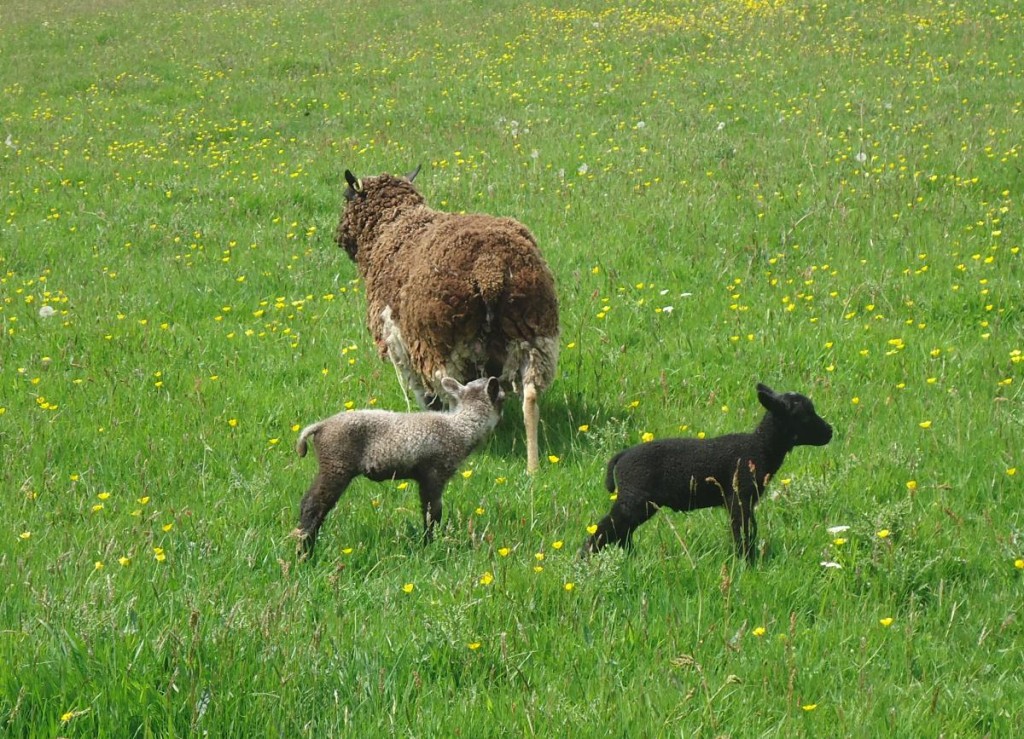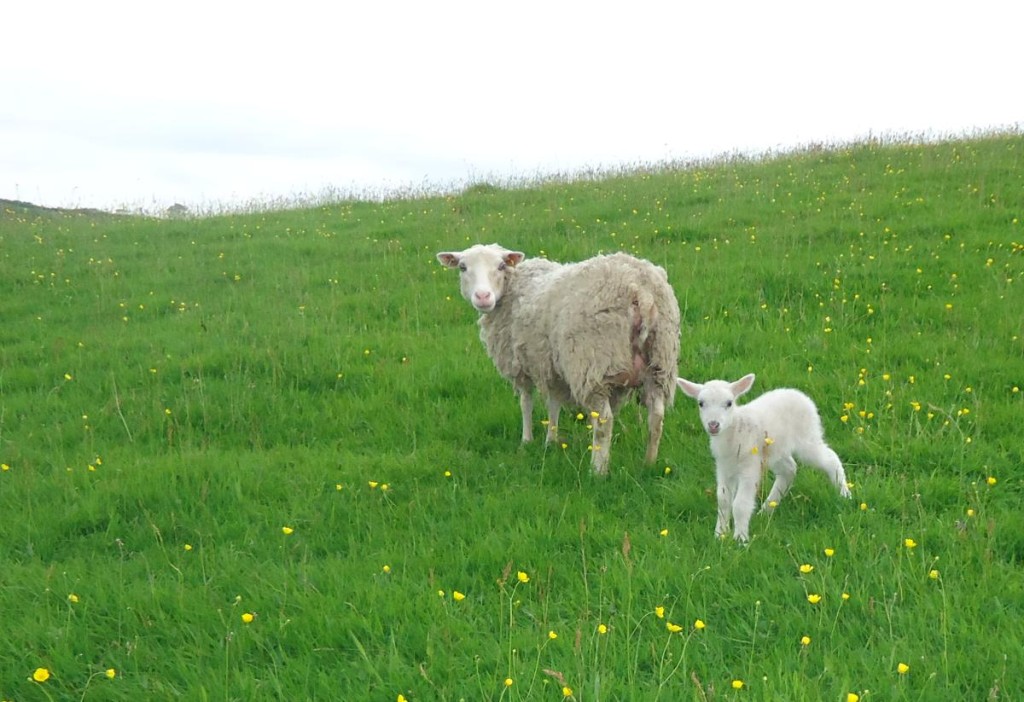Here is a picture of Harley – or is it Quin? – with her twins, born on Friday. Ram-lamb on right, ewe-lamb on left. Click on the photo to expand. Five more ewes to lamb.
Back in last Autumn, when planning this year’s lambing, I made the decision to put Lancelot the ram in rather late (in December), with a view to lambing in May of this year. I did this largely as a response to the situation last Spring, which really didn’t happen here properly until very late: a weather pattern of dry and cold easterly winds set in and did not shift (another example of weather patterns getting stuck of late), meaning that the pasture did not ‘get away’ until very late. As it happened, I did not lamb last year, since I am keen to not let livestock numbers get too large for the acreage available – if I had planned a Spring lambing last year then I would have been in a fix with no pasture available for lactating ewes.
A late lambing fits in rather well with my livestock and meat regime: I offer hogget meat (from an animal that is in its second year), rather than lamb, which will go for meat in its first year. The fact that I am not racing to get a lamb fattened for market in its first year (‘slow-farming’ as a complement to the slow-food movement) means that I do not have to creep-feed my lambs; creep feeding involves letting lambs have access to grain-based concentrates as well as/instead of pasture, even while they are primarily nursing on the ewe’s milk. As well as the expense in buying in this creep-feed and the associated equipment, there is a lot of evidence (e.g. see this or this) that meat from pasture-fed ruminants (i.e., cattle and sheep) is healthier that meat from animals that are fattened using grains: there is a higher ratio of ‘good’ Omega 3 essential fatty acids to Omega 6 EFAs. Furthermore, unless it is Certified Organic creep feed it is possible that it will contain GMOs, with the associated health risks to the consumer. My hogget meat comes from animals that grow slowly, with two Spings/Summers on a mixed pasture that is not fertilised by synthetic chemicals; the mutton as well is pasture-fed – just with more Springs/Summers at grass.
Interestingly, the 2014 Country Smallholding magazine carried an article suggesting the possibility of moving to late May for lambing (largely as a result of the record wet winter which has had devastating consequences for many UK farmers) – although this was largely written in the context of hill/upland farmers who move between lowland pasture/meadow and hill grazing throughout the year. For smallholders, without the access to higher/drier grazing, they suggested keeping livestock housed for longer – and of course, that does not involve munching on health-building pasture!
This year, then, in contrast to 2013, we have had a pretty much perfect Spring: an ideal mix of warmth and showers has meant that the pasture flushed up nicely, giving all of the livestock a fine bite. The early warmth also led to yesterday’s first BBQ of the season – during which we enjoyed some particularly tasty Shetland mutton chops of course!
UPDATE 22nd May: Harley and Quin now each have twins – and Whitey-Pink-Nose has a Junior WPN (I know you shouldn’t give them names if eating is on the cards further down the line – but it’s useful to be able to identify them in conversation). Picture below of WPN and Junior WPN.

